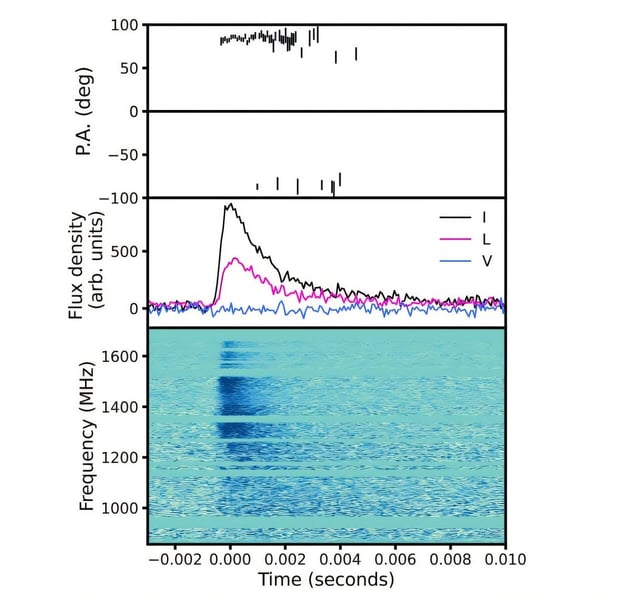Overview
- Follow-up JWST NIRCam and NIRSpec observations assigned FRB 20240304B a spectroscopic redshift of z = 2.148, establishing it as the most distant localized fast radio burst.
- The host galaxy is a low-mass, clumpy system with roughly 10 million solar masses, a star-formation rate near 0.2 M☉ per year and metallicity about 10–20% of solar.
- A dispersion measure of approximately 2,330–2,458 pc cm⁻³ and a linear polarization fraction approaching 49% extend the reach of FRBs as probes of intergalactic baryons and magnetic fields to the cosmic noon epoch.
- Analysis of the burst’s sightline, including contributions from the Virgo Cluster and a foreground group, reveals complex magnetic-field structures across gigaparsec scales.
- Discrepancies in media reports of the burst’s dispersion measure have highlighted the need to consult the team’s arXiv paper and data release for definitive measurements.


